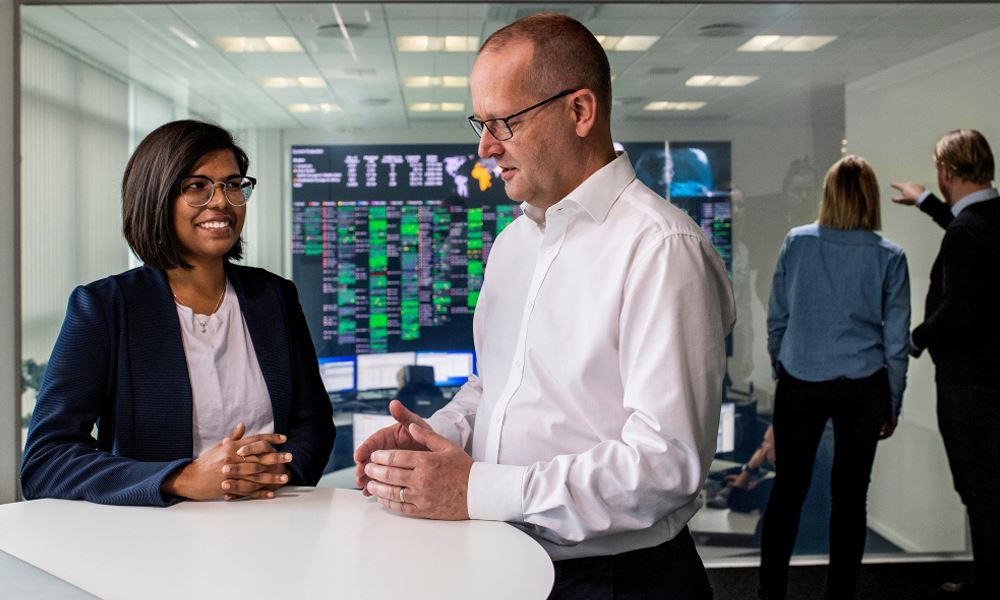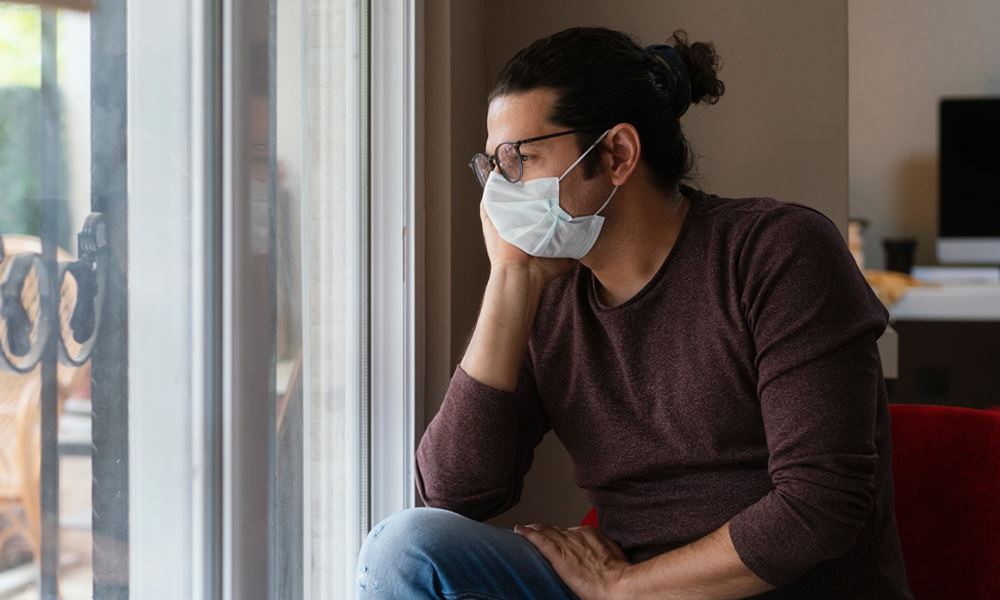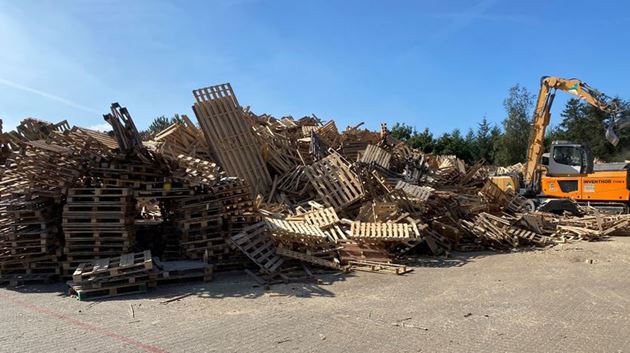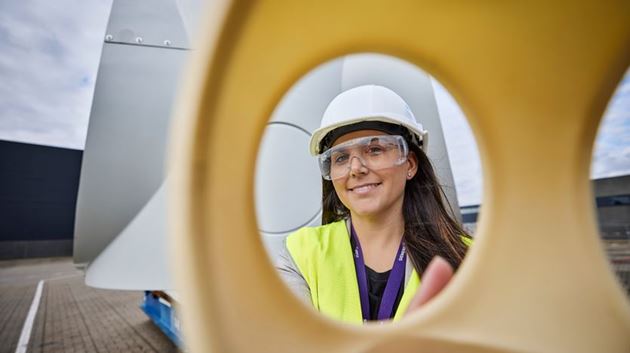
Don’t brush off ‘burnout’
Madrid / 7 April 2022
A burning building. This analogy was used by the American psychanalyst Herbert Freudenberger to introduce the term burn-out in 1974. A total lack of energy, a decline in your sense of belonging and a plummeting self-esteem are one of the most common symptoms. At Siemens Gamesa, we acknowledge the effects of burnout and recognize our role to help employees not fall prey to it. Last year we launched the Perceived Stress Survey (PSS) and when we saw the high levels of stress within our workforce, we knew we had to course correct. That’s why we have dedicated many more efforts towards assessing stress levels, making employees aware and then providing the necessary tools to successfully manage stress as a result of work.
How many times have you heard someone saying that s/he’s stressed at work, it’s been a bad couple of months and s/he’s burnt out? We’ve begun to think, it’s a natural phenomenon and something that will pass. But stop yourself right there! The World Health Organization (WHO) officially recognizes burnout as an occupational phenomenon, stating it is a syndrome that occurs when occupational stress becomes chronic and is not successfully managed. It is characterized by three dimensions, namely feelings of energy depletion or exhaustion, increased mental distance from one’s job, or feelings of negativity or cynicism related to one's job and reduced professional efficacy. While WHO is not classifying burnout as a medical condition, this recognition of burnout that has its root cause traced to the workplace environment is still a huge breakthrough.

At Siemens Gamesa, we have always taken the health and wellbeing of our employees seriously. We acknowledge that we have the obligation to take care of the stress levels of our workforce with real actions aimed at ensuring that these levels remain healthy. That’s why as part of a Workplace Wellbeing Assessment, our Health, Safety and Environment (HSE) department measures the psychosocial risks at the workplace. This is done in every country we operate in, with appropriate action plans implemented for that particular market.
Another significant step was to launch the Perceived Stress Survey (PSS) last year as a means to measure the stress levels in our workforce. The survey is a psychological instrument created by Cohen, S. and colleagues and one of the most widely used studies worldwide to assess the stressfulness of situations, the effectiveness of stress-reducing interventions, and the extent to which there are associations between psychological stress and psychiatric and physical disorders.
Becoming aware of stress and learning to manage it at the workplace
The survey gave us essential data points on stress within our workforce and also threw up some valuable insights. For example, we observed that employees who work from home have more stress than those who go into work. However, teleworking per se cannot be held responsible to cause more stress, since one needs to take into consideration the timeline of the survey.
Teleworking – brought on by multiple lockdowns due to COVID-19 - was forced by the circumstances and not chosen by the workers. Hence the conditions for teleworking may not have been the best in many cases. - small houses, longer hours since there was no physical difference between the office and home for an extended period of time. Working from home during the pandemic also meant little or complete lack of socialization, which is a protective factor against stress. Informal relationships in the office are relevant to keep stress levels under control and the isolation of telework cannot be resolved with video conferences or similar systems.
Teleworking – brought on by multiple lockdowns due to COVID-19 - was forced by the circumstances and not chosen by the workers. Hence the conditions for teleworking may not have been the best in many cases. - small houses, longer hours since there was no physical difference between the office and home for an extended period of time. Working from home during the pandemic also meant little or complete lack of socialization, which is a protective factor against stress. Informal relationships in the office are relevant to keep stress levels under control and the isolation of telework cannot be resolved with video conferences or similar systems.
“These factors undoubtedly increased stress levels for our employees who predominantly worked from home last year” says Jesús Fagúndez Díaz, in charge of Global Mental Health at Siemens Gamesa. “In fact, the results from the PSS survey were introduced as indicators in our HSE department to enable us to make periodic measurements of stress levels over the next few years. It is what prompted us to mobilize a global team that focuses on the mental health of our employees. This team has been hard at work since the beginning of 2021 and has already put many initiatives in play. And we are already seen that the trend is improving over a 11% since we have started to work on the topic.”

Some of the important measures include creating a Mental Health Booklet for our managers. This booklet in addition to a training we are developing will support managers to take care of their team’s mental health and inform them about the tools at their disposal. Then is a Care + app to promote healthy habits – the app has a range of activities, recommendations and tips to reduce stress and last but not the least is developing an overall Mental Health policy.
“The company has put in a great deal of effort in making employees aware of the dangers of burnout,” says Luis Nuin. “Additionally, we have access to a wide range of psychological support services if needed. If anyone of us feel worn out, or don’t know how to deal with stress, we can always reach out to these services, that are provided with full confidentiality. I’m glad that the company has been so proactive on the issue – although there are always ways to improve, it speaks high volumes of their commitment to our overall mental health and wellbeing.”
“The company has put in a great deal of effort in making employees aware of the dangers of burnout,” says Luis Nuin. “Additionally, we have access to a wide range of psychological support services if needed. If anyone of us feel worn out, or don’t know how to deal with stress, we can always reach out to these services, that are provided with full confidentiality. I’m glad that the company has been so proactive on the issue – although there are always ways to improve, it speaks high volumes of their commitment to our overall mental health and wellbeing.”



